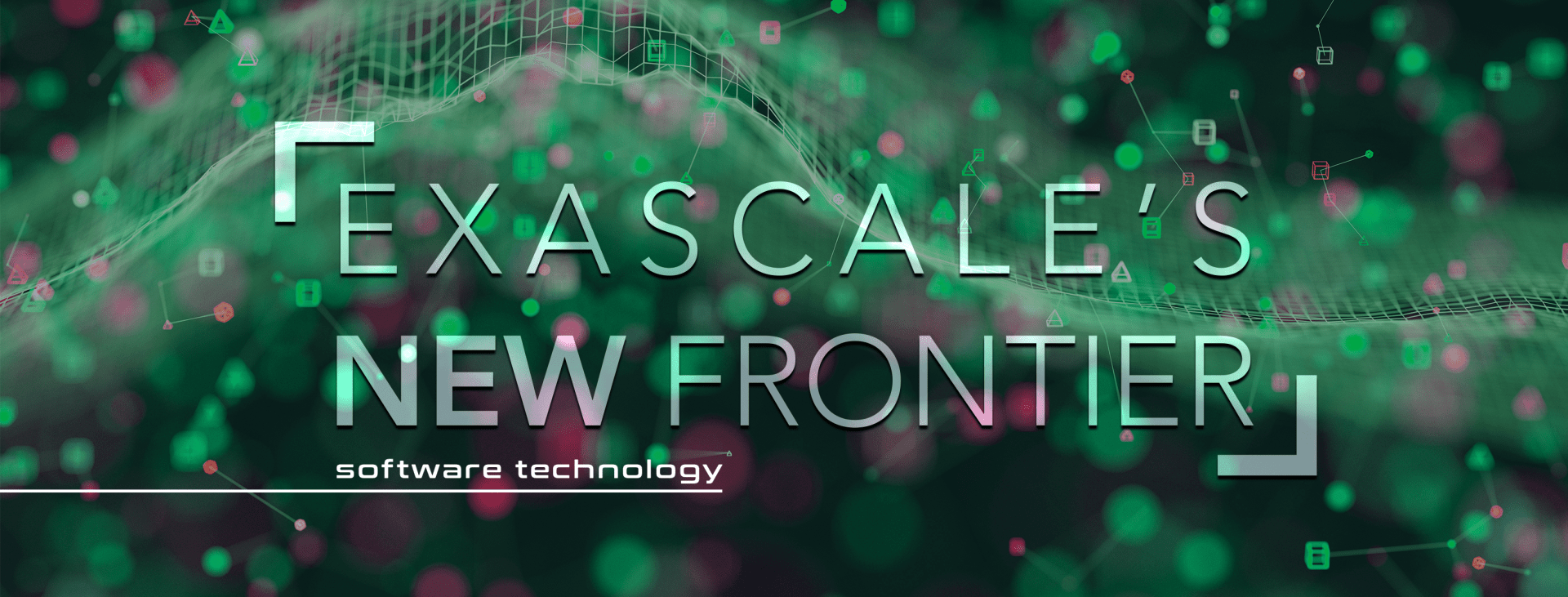
Bill Renaud, OLCF user support specialist and co-creator of the OLCF training video channel (center, red shirt), presents his “11 best practices” at a livestreamed user training call at ORNL. Along with online viewers, the call was attended by (clockwise from lower left) Chris Fuson, Suzanne Parete–Koon, Renaud, Sherry Ray, Quinn Mitchell, and Verónica Vergara Larrea (lower right).
New online outlet to provide continuous access to user training
Training for new and existing users at the Oak Ridge Leadership Computing Facility (OLCF)—a US Department of Energy (DOE) Office of Science User Facility located at Oak Ridge National Laboratory (ORNL)—has become easier with the recent launch of the OLCF training video channel on Vimeo.
The channel was created and is maintained by OLCF user support specialists Suzanne Parete-Koon and Bill Renaud. Because ORNL recently switched to Blue Jeans, an interoperable cloud-based video conferencing service, Parete-Koon and Renaud can now capture and edit videos more easily to be organized in one online location. The channel will contain edited user group webcast recordings, archived sessions of live-streamed user training videos, and prerecorded training videos to help facility users access and use OLCF resources as well as troubleshoot problems.
The channel differs from past offerings in that videos are organized topically and are continuously available online.
“Before we put the videos on Vimeo, users had to dig through the various event pages on the OLCF website to find them,” Parete-Koon said. “This new channel allows users to find everything in one place.”
This method also will benefit users by providing timely content in an efficient manner.
“One of the great things about this approach is that we can make and upload a video to the training channel in a week,” Parete-Koon said. “We don’t have to wait for a live event if we need to do something timely like reviewing a new method or announcing how ‘system X’ has radically changed.”
Live-streamed user training videos are the most recent addition to the OLCF training channel. Parete-Koon and Renaud are currently planning to generate new user training videos on a monthly basis. Their first video, recorded on Jan. 27, features Renaud’s 11 best practices for using OLCF resources. Subsequent videos will expand on each best practice. In comparison to the annual user training conference calls of the past, Parete-Koon hopes that users will access these helpful videos continually through the Vimeo channel.
User calls are monthly video conference calls involving facility users, the OLCF User Group executive board, and OLCF staff. The calls are an opportunity to share timely tips, announcements, questions and answers, and user-driven content with the OLCF user community. Although Parete-Koon and Renaud still upload the recorded videos on the user event page, the videos will also be available in one location on the Vimeo channel.
In addition, the OLCF training channel will contain prerecorded training. Parete-Koon and Renaud recently worked with Bronson Messer, an OLCF computational scientist, to make a video about troubleshooting linking errors. In the video, Messer runs through problems that users could face.
“The training channel is a great supplement to our existing training,” Renaud said. “We can deliver concise, relevant training in a user-friendly format that provides the same user experience on just about any computer, tablet, or smartphone.”
Currently, the training channel includes videos on various OLCF applications like DDT, Wraprun, and Globus, as well as OpenACC user experience talks in which users explain what they’ve learned from using certain OpenACC tools. Parete-Koon and Renaud are hoping to add more in the coming year.
“We’re going to adjust the channel to get maximum benefit for the user,” Parete-Koon said. “We’re looking forward to the feedback we receive from the user survey and user group meetings.” – Miki Nolin
Oak Ridge National Laboratory is supported by the US Department of Energy’s Office of Science. The single largest supporter of basic research in the physical sciences in the United States, the Office of Science is working to address some of the most pressing challenges of our time. For more information, please visit science.energy.gov.




